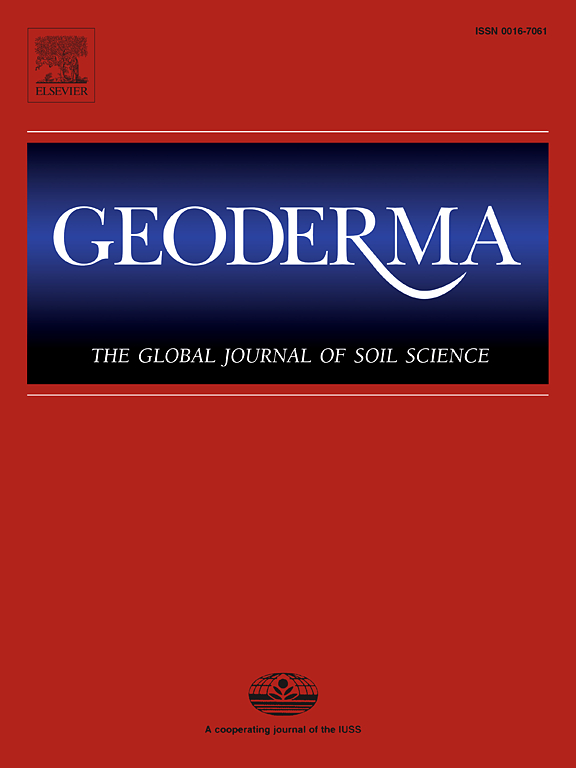全球土壤分布图:土壤形成因子的组合与空间化
IF 6.6
1区 农林科学
Q1 SOIL SCIENCE
引用次数: 0
摘要
该研究提出了一个全球土壤区地图的发展,该地图以90 m的高空间分辨率,根据其形成过程的相似性对土壤单元进行分类,同时排除了人为影响。该地图是为科学家、土地管理者和政策制定者设计的,它根据关键的土壤形成因素,包括母质、气候、土壤生物、地形和固有的土壤特性,对不同的土壤单位进行分类,称为土壤原。本研究采用主成分分析(PCA)、非度量-多维尺度(NMDS)和无监督分类技术(K-means聚类)相结合的方法,捕捉了世界上不同景观中土壤形成过程的全部过程,得出了一个无偏的、全球适用的分类。全球土壤分布图使土壤容量和条件监测在全球范围内。这一基础对今后确定“最小受扰土壤”具有重要意义,可作为全球任何土壤的参考。通过将该数据集与更广泛的环境数据相结合,全球土壤分布图支持全球加强土壤安全和监测环境变化的努力。本文章由计算机程序翻译,如有差异,请以英文原文为准。
The global pedogenon map: Combining and spatialising the factors of soil formation
This study presents the development of a global pedogenon map, which classifies soil units based on similarities in their formation processes while excluding anthropogenic effects, at a high spatial resolution of 90 m. Designed for use by scientists, land managers, and policymakers, this map classifies distinct soil units —called pedogenons—based on key soil-forming factors, including parent material, climate, soil organisms, relief, and inherent soil properties. This study employs a combination of principal component analysis (PCA), non-metric-multidimensional-scaling (NMDS), and an unsupervised classification technique (K-means clustering) to capture the full range of soil formation processes across diverse landscapes of the world yielding an unbiased, globally applicable classification. The global pedogenon map enables soil capacity and condition monitoring on a global scale. This foundation is crucial for future identification of “least disturbed soils” to serve as a reference for any soil around the globe. By integrating this dataset with broader environmental data, the global pedogenon map supports global efforts to enhance soil security and monitor environmental changes.
求助全文
通过发布文献求助,成功后即可免费获取论文全文。
去求助
来源期刊

Geoderma
农林科学-土壤科学
CiteScore
11.80
自引率
6.60%
发文量
597
审稿时长
58 days
期刊介绍:
Geoderma - the global journal of soil science - welcomes authors, readers and soil research from all parts of the world, encourages worldwide soil studies, and embraces all aspects of soil science and its associated pedagogy. The journal particularly welcomes interdisciplinary work focusing on dynamic soil processes and functions across space and time.
 求助内容:
求助内容: 应助结果提醒方式:
应助结果提醒方式:


